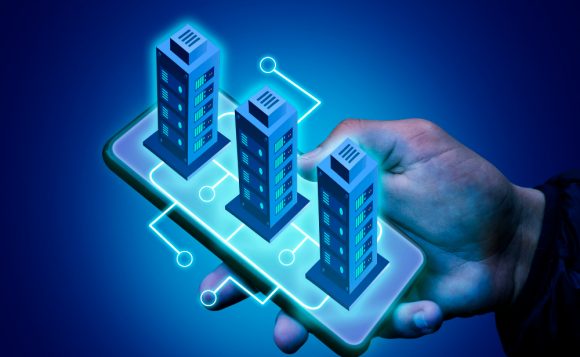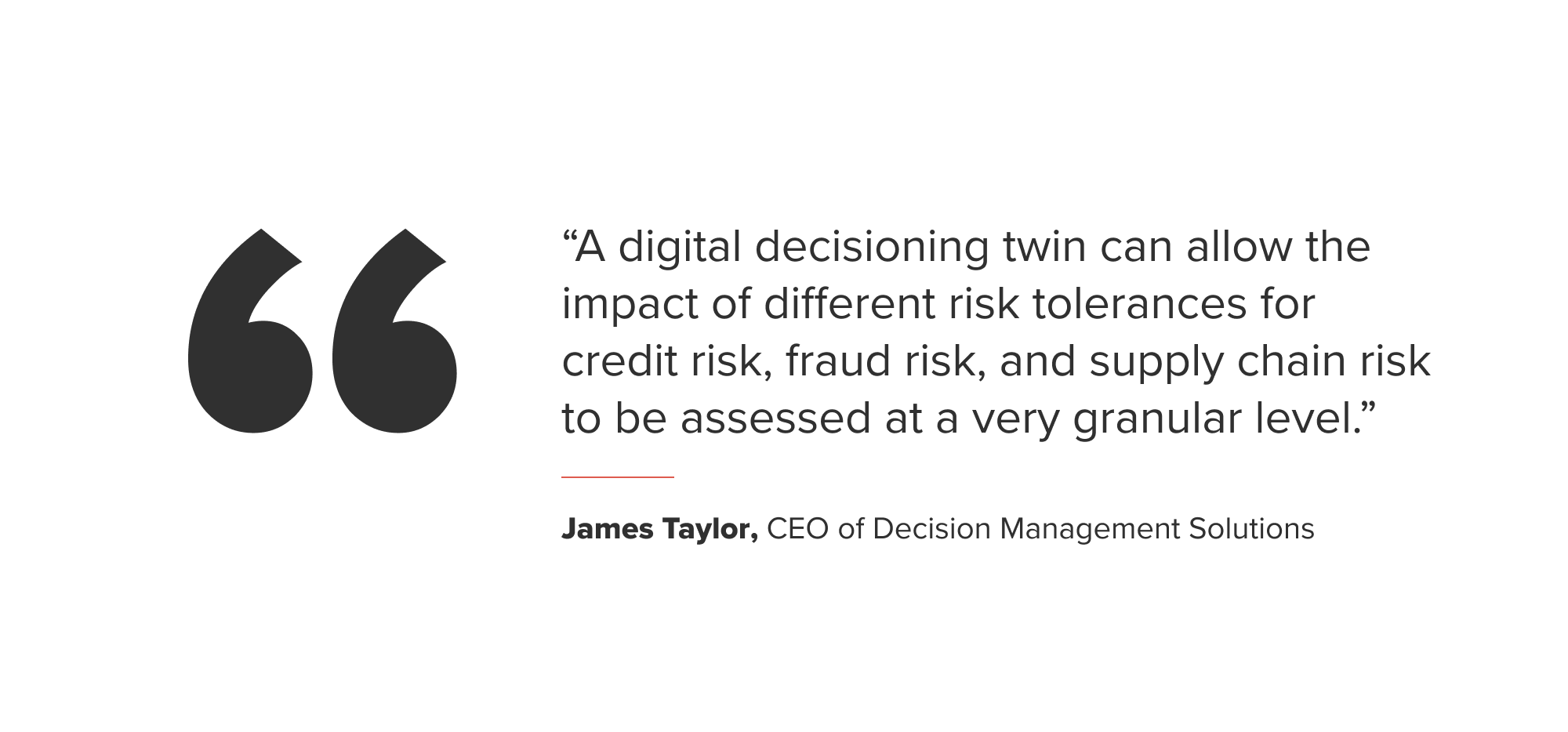
A digital twin is a 3D model that recreates the main traits of a physical object. The main essence of digital twin technology is the data collected from trackers on the real object and transferred to cloud storage. The data updates in real-time. Digital twins of physical objects can be reproduced in virtual reality or be superimposed on a real environment like an AR object.
Usually, digital twins can recreate buildings, people, constructions, and the whole interaction mechanism like chain supply. And one of the main purposes of implementing virtual twins is to model object potential behavior, as well as to fix construction mistakes in the early stages of development.
Today, this technology is successfully implemented by various famous companies, including Renault, Karcher, Amazon, etc. In 2021, according to Allied Market Research, the digital twins market was estimated at 6,5 USD billion, and by 2030 this market value will have increased to more than 125 USD billion.
So, in this article, we will give more information about digital twins and in which business fields this technology is applied.
How Digital Twins Are Created
Digital twins are developed using ІоТ trackers, cameras, and business apps, that collect the necessary real object data to recreate its digital version.
The cloud platform AWS IoT TwinMaker від Amazon is one of the programs to develop digital twins. This platform facilitates and accelerates the digital twin-building process for many industries like construction, logistics, manufacturing, and others. On the platform, you can develop 3D twins of buildings, manufacturing equipment, and chain supplies.
Advantages of Digital Twins
Some of the main advantages of implementing digital twins in the business include
- Digital twins increase companies’ productivity and optimize their work. That means, by using this technology, companies accelerate the process of making products. According to Global Logic, digital twins reduce the labor force required for the design structure process by 85%.
- Digital twins help to make an important decision on creating real objects. James Taylor, Forbes Business Member and CEO of Decision Management Solutions, in his article Digital Twins: The Solution To Better Decision-Making describes how digital twins can facilitate making decisions and help to predict all possible risks.

- Digital twins offer real-time tracking of the working process. And in some fields, like manufacturing, for example, digital twins tracking can be even life-saving.
“With real-time replication of the physical status of assets — walk-in freezers, refrigerators, promotional coolers, shelving, carts, and other equipment — and automated corrective actions, it’s easier to avoid wasting electricity, time, and product when anomalies arise. Digital twins promote positive outcomes for asset protection programs through reduced waste and loss and, most importantly, saved lives,” wrote Guy Yehiav, President of SmartSense.
- Digital twins offer an option to predict how the real object could work in different circumstances. According to Business Wire Report, 75% of Air Force executives are confident in applying digital twins. When using this technology, engineers can be assured of the safety of people on airplane boards. With the help of digital data, they can predict possible issues in aircraft and their engines, etc.
Limitations and Challenges of Digital Twinning
With the development of digital twins, you should pay attention to such challenges as
- Difficulties with the search for necessary data to design certain digital twins. “Sometimes the data is owned by private companies. Occasionally the federal level holds the data. Often, there is no real-time data available or only from a limited amount of sensors, and at times there is no data at all,” said Marco van Bemmel, web developer and author of the article “Three Key Challenges Towards Digital Twin Adoption at Scale”.
- At the same time, you should consider proper digital data security from leaks. According to Gartner, in 2023, almost 75% of digital twins of original equipment manufacturers connected to ІоТ will use, at least, five different types of integration endpoints — network addresses in the Cloud with integration data. And, every type of address has its own insecurities to consider, so there is a need for constant security protocol updates.
Examples of Digital Twins In Action
How Digital Twin Technology is Transforming the Automotive Industry
Digital twins in the automotive industry are usually applied for designing 3D copies of cars. Particularly, with digital twins, you can calculate a car’s behavior on a road and eliminate construction mistakes.
For example, French automotive company Renault is already implementing digital twins for new vehicle development, including design and construction.
“With their three-dimensional digital simulation tools, engineers can even place a virtual occupant inside the future vehicle early in the process, just as they would in a physical car. These tests help assess certain constraints, such as positioning (ergonomics) and HMI (human-machine interface),” wrote Nicola Le-Boucher, author of the article Vehicle Digital Twin: when physical and digital models unite для Renault Group.
Digital Twins Use Cases in Healthcare
In healthcare, digital twins are applied for recreating patients’ bodies, based on their physical condition and medical history. The data changes in real-time and shows a patient’s current well-being and the progress of the disease.
A digital twin of human creation is a more difficult and sophisticated process. That’s because doctors use blood tests, X-ray pictures, and other analyses to create a patient’s digital copy, trying to preserve all their individual physical characteristics as realistically as possible.
Doctors use digital twins of patients for different purposes: medicine testing and surgery simulations. By the way, doctors in Brazil used digital copies of conjoined twins to do a 28-hour-long surgery to separate patients. You can read more about it here.
Speaking about medicine testing, doctors from Linköping University in Sweden use digital twins for choosing the right treatment for patients. For example, scientists started building digital twins of mice, based on their RNA.
“Our aim is to develop those models into ‘digital twins’ of individual patients’ diseases in order to tailor medication to each patient, said doctor Mikael Benson, a professor at the university who led the study. Ideally, each twin will be computationally matched with and treated with thousands of drugs, before actually selecting the best drug to treat the patient”.
How Digital Twin Technology is Revolutionizing Construction
In construction, digital twins help not only to project and construct new buildings quickly and efficiently but also track the current condition of already existing ones.
Digital twins of buildings in augmented reality are already proven to be efficient at designing buildings, rooms, and landscapes.
Speaking about already existing constructions, German company ВАМ and Dutch company TNO collaborated to develop digital twins for infrastructure objects, like bridges. Every building has trackers that collect the object condition data. The data helps to find out whether the object needs repairing. The bridge trackers, for example, collect data from vibrations caused by vehicles driving over the bridge. The data is transferred to a computer through a cable, conducted along the bridge.
Future of Logistics: Supply Chain Digital Twins Explained
In logistics, digital twins offer a possibility to calculate the right product delivery routes, consider alternative chain supplies and the amount of safety stock.
When the COVID-19 pandemic started and disrupted supply chains, Microsoft, together with Coupa, had to use data for developing digital twins to consider the optimal supply chain.
“Data is the key, and I have a philosophy of managing your business by facts and figures, said Jonathan Allen, director of global network modeling, design, and planning at Microsoft. It’s about how we take our physical supply chain and digitize it in a way that you have a digital mapping and duplication of what’s happening physically across the supply chain.”
Digital Twins: Future of Manufacturing Industry
Digital twins technology in manufacturing offers you to model a final product and eliminate potential defects in the early stages. For example, Karcher applied digital twin technology to improve the quality of batteries. Their main purpose for using digital twins was to reduce the size and heating of the batteries.
In general, digital twin technology is an interesting and efficient way to transform modern business fields. Using the technology, you can optimize factories’ work, improve the design of the product, and track the condition of already existing constructions. Moreover, digital twins become popular in healthcare, since sophisticated virtual copies of patients help doctors test medicine and choose the right treatment without causing harm to real people. Above, we offer only a short list of industries, where digital twins are successfully applied.
Image: Freepik


